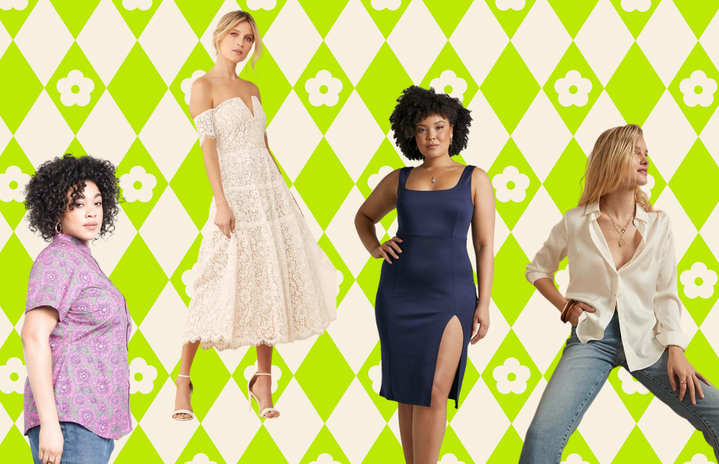If you’re someone who has and uses social media, then you’ve almost certainly come across the term “baddie” or “baddie era”. This was a trend that took social media by storm a couple years ago- we’re talking circa 2016- and yet still has a major influence over and hold on social media today. A “baddie” is often referred to as someone who is confident, always well-dressed, has near-perfect makeup, and isn’t easily messed with- though it is more commonly linked to females and femininity. Some associate being a “baddie” with having a clean streetwear aesthetic and “flawless” make-up- but this has extended to encompass having any aesthetic that is trendy and worn in an effortless way. Naturally, this picked up traction on social media because it portrayed the epitome of perfection in a picture, which was the goal of social media for a long time. There are, however, obvious negative and positive consequences of the “baddie” era.
One of the more negative consequences, was that it created an expectation for near perfection on social media- and thus in society as a whole. People were now only posting pictures on social media that were not accurate portrayals of them or their lives but were instead a very fake and “perfect” version of them. The “baddie” era made social media a high-pressured environment where a lot of people were nervous about posting because they were worried their post wasn’t perfect- and that this would destroy the entire image that they’d created for themselves. This also means, though, that society was consuming all these highly specific aesthetically pleasing images that portrayed people and their “every-day lives” as severely put-together and glamourous. The problem with the mass consumption of this content is that people try and mimic this in their own lives and hold themselves to an almost unattainable standard. This led to a lot of destruction of self-esteems and self-worth as people felt they just couldn’t reach these standards, or when they could, they were unable to maintain them. It took the world a long time to realise just how curated these pictures were- and how normal it was to not live a perfect and glamourised lifestyle.
The “baddie” era was also a gateway of sorts into people establishing their lives as “eras”. It led to the introduction of the “clean-girl” era/aesthetic, the “villain” era, the “gym baddie” era, and the “flop” era- amongst many, many others. The introduction of eras isn’t necessarily a bad thing- especially ones that promote healthy lifestyles like the “gym baddie” era- as these allow people to claim their own narrative and situate themselves in a certain period of their life. Many argue that eras let people firmly move on from certain experiences and ways of living. There’s also an argument that eras let people communicate to others where they are in their lives and what they’re going through. However, I often worry that classifying portions of your life as eras undermines the experience in and of those portions. On top of this, some of the eras that were introduced were somewhat controversial on social media. The “clean” girl era was criticized for being “popularized” or created by white women, despite this being an aesthetic practiced by people of colour for much longer than the era has been around- even labelling it as an “aesthetic” was criticised. Another somewhat controversial era is one quite similar to the “baddie” era- the “villain” era. The “villain” era is almost a step up from the “baddie” era because it emphasizes a very unbothered nature- which is both good and bad. The good part about it is that it’s encouraging people to be confident in their actions and not focus on what other people think of what they’re doing with their lives- which I would argue is an improvement from the “baddie” era. However, the “villain” era also seems to risk a bitterness and a detrimental uncaring attitude. In this way, I think the “baddie” era somewhat encourages a little bit of toxicity because it emphasizes an ‘untouchable’ attitude. In romanticising experiences by labelling them as ‘eras’, there is a great risk of not processing them efficiently or completely overlooking the experience. There clearly needs to be a delicate balance in using the whole ‘era’ concept.
I will, however, admit that the “baddie” era was not all bad, especially when it broadened to the concept of being confident and comfortable in your actions and aesthetic. I find that it inspired people to explore their self-identity through creative approaches to aesthetics- and helped people construct narratives about their own lives in this way. On top of this, I find that the “baddie” era introduced an acceptance and exploration of a more confident and possibly even provocative version of people because they were (eventually) less focused on society’s expectations. Though the “baddie” era was a bit of a troublesome trend when it started, I think it’s grown to have a lot more of a positive interpretation that really allows people to find confidence in themselves.
Ultimately, the impact of the “baddie” era is a bit of a mixed bag- and is largely dependent on people’s subjective experiences of this trend or era. Some may find it objectifying and limiting, and something that is an unrealistic standard to reach. However, others may argue that it’s allowed them to become better, and more confident versions of themselves.
The opinions expressed in this article are the writer’s own and do not reflect the views of Her Campus.
This article is written by a student writer from the Her Campus at UCT chapter.


